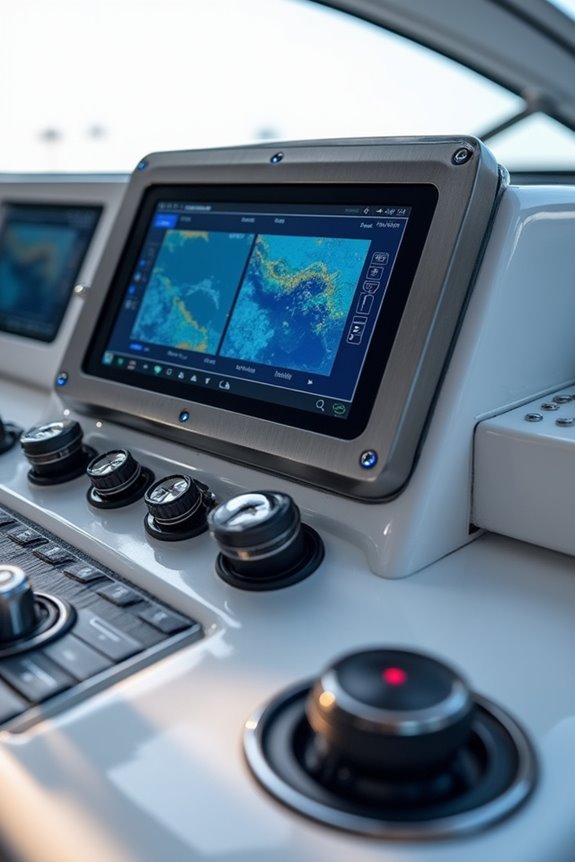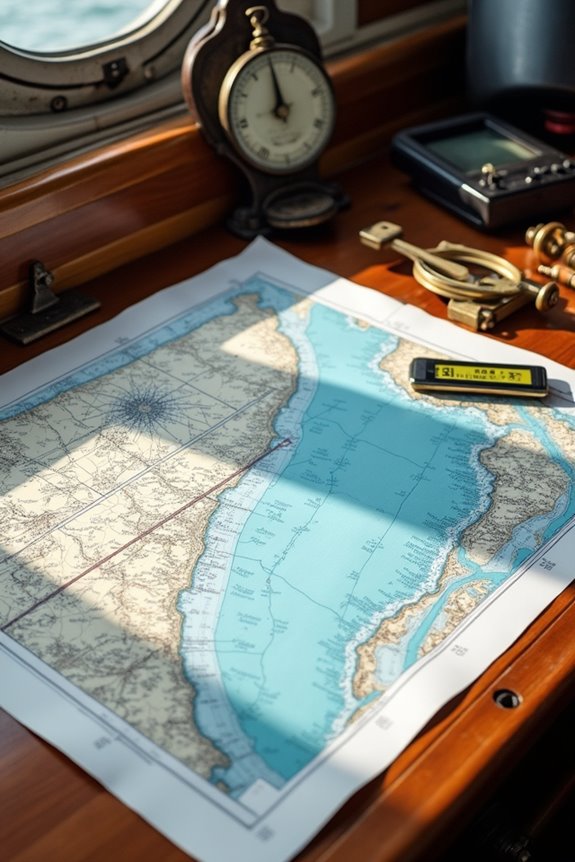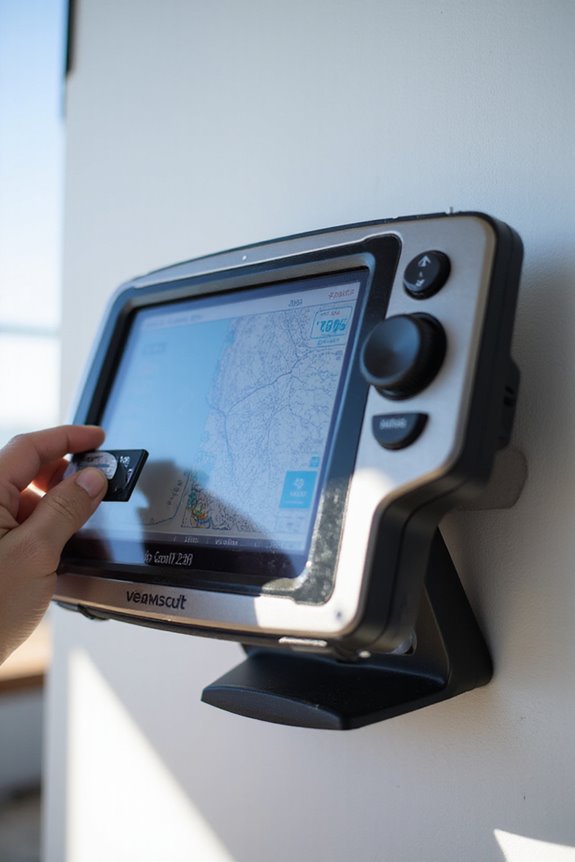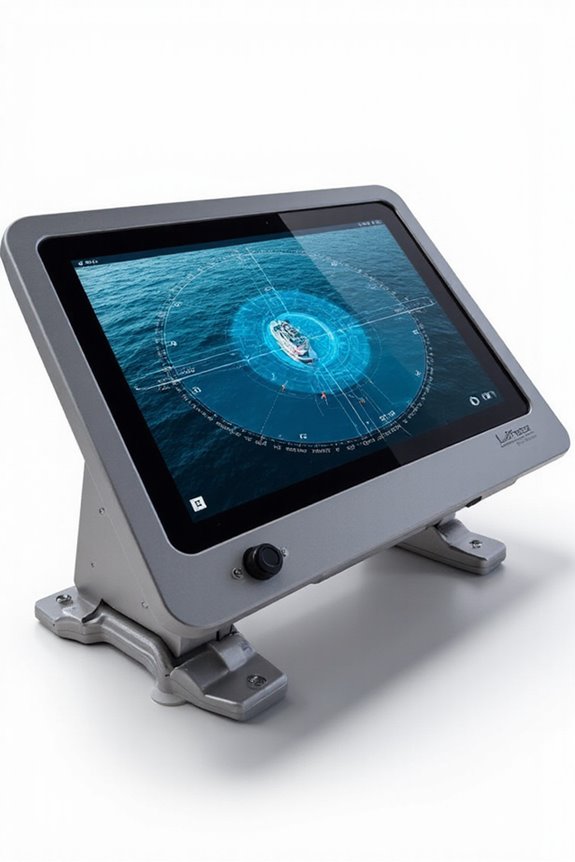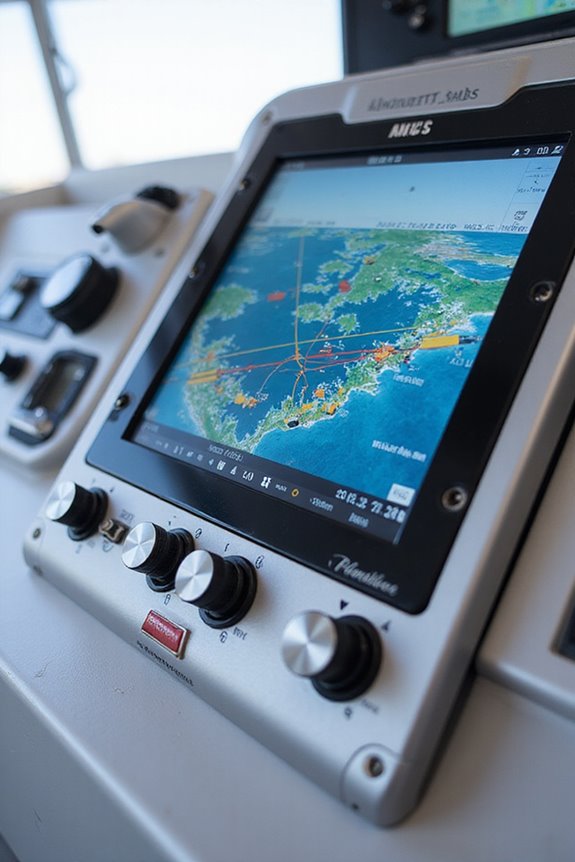Maneuvering a yacht today isn’t just about steering—it’s about having smart tools like multifunction touchscreens that combine radar, navigation, and engine data into one easy interface. Ever tried docking and wished for a helping hand? Autonomous docking systems use sensors and cameras to make that smoother. Plus, AI-driven route planning adjusts for weather and traffic, while augmented reality overlays highlight hazards you might miss. Ready to explore how these systems keep voyages safer and smoother?
Key Takeaways
- Integrated multifunction touchscreens combine navigation, radar, and engine data into customized, sunlight-readable displays for enhanced cockpit safety.
- Augmented reality overlays highlight navigation hazards, improving situational awareness without distraction from multiple screens.
- AI-driven route planning adapts to real-time weather, currents, and traffic, optimizing safety, fuel efficiency, and environmental protection.
- Autonomous docking systems use sensors and 360-degree mapping to ensure precise, safe mooring in various conditions.
- Real-time monitoring provides alerts for vessel security, anchor stability, wind conditions, and potential hazards to support proactive safety measures.
Multifunction Touchscreen Integration for Enhanced Situational Awareness
Anyone who’s spent time on a yacht knows that juggling navigation, radar, engine stats, and other info can get pretty overwhelming. That’s where multifunction touchscreen integration really shines, bringing everything into one easy-to-use user interface. Imagine splitting your screen just how you like it—radar on one side, charts on another, autopilot controls right where you want them. It’s like customizing your own cockpit. Plus, the touchscreen feels familiar, almost like using your smartphone or tablet, making learning curves gentler. This user customization means everyone on board can set up dashboards tailored to their needs, boosting both comfort and safety. And hey, with bright, sunlight-readable screens, we don’t have to squint or guess our next move, no matter where we sail. Isn’t that a win for team yacht?
Augmented Reality Overlays in Navigation Displays
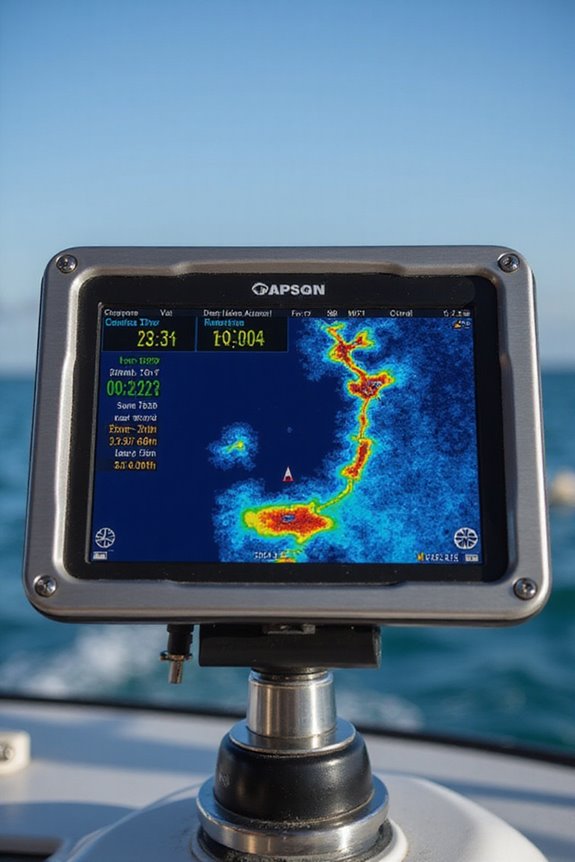
While traditional navigation displays have served us well, augmented reality (AR) overlays are quickly changing the game on yachts. AR navigation blends real-world views with essential data—like AIS info, radar targets, and shallow water alerts—right before our eyes, boosting situational awareness without juggling multiple screens. Ever lost track of a buoy in fog? AR highlights such hazards, even at night, reducing stress and helping us make better decisions together. Systems like Furuno Envision and Groke’s As-Pro integrate smoothly with radar and infrared cameras, giving our crew a shared, clear picture of the environment. It’s like having a co-captain who never misses a beat. So, why settle for looking down at screens when AR overlays can keep us looking out, safer and more confident?
AI-Driven Route Planning for Optimal Voyages

We’ve seen how augmented reality makes navigation more intuitive by blending data with our real-world view, but what if we take things a step further? AI-driven route planning steps in, using real-time weather, currents, and marine traffic to chart the smartest course. It’s like having a seasoned captain who never sleeps, constantly adjusting routes to save fuel consumption without sacrificing speed. Plus, with user customization, we can prioritize what matters most—whether it’s efficiency, cost savings, or even scenic stops. This smart tech doesn’t just optimize your trip economically; it also reroutes to avoid sensitive marine areas, helping us protect the environments we love. Who knew cutting-edge navigation could feel this personal and eco-friendly? Ready to let AI take the helm on your next voyage?
Autonomous Docking and Precision Mooring Technologies
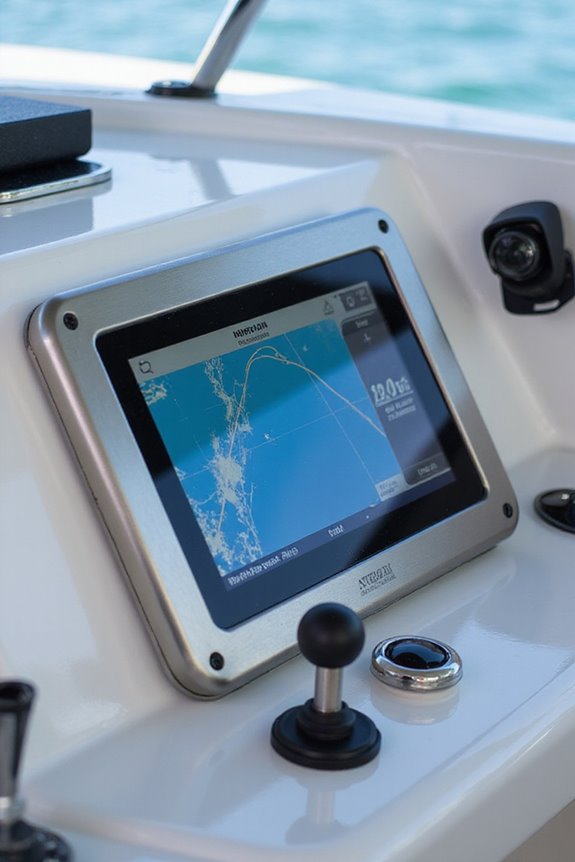
Even though docking a yacht has traditionally required skill and steady hands, today’s autonomous docking and precision mooring technologies are changing the game completely. By using autonomous navigation systems with sensors, cameras, and GPS, we can now glide into a berth with unprecedented docking efficiency. Imagine 360-degree mapping that spots obstacles and adjusts for wind or currents so you don’t have to break a sweat. Think of Lidar and night sensing tech working quietly behind the scenes—kind of like a trusted co-pilot keeping you safe. Of course, human oversight remains essential; these smart systems enhance our abilities instead of replacing them. Together, they turn what used to be a nerve-wracking maneuver into a smooth and precise experience, making every docking feel like second nature. Isn’t that the kind of teamwork we all want?
Centralized Bridge Control Consoles for Improved Operations
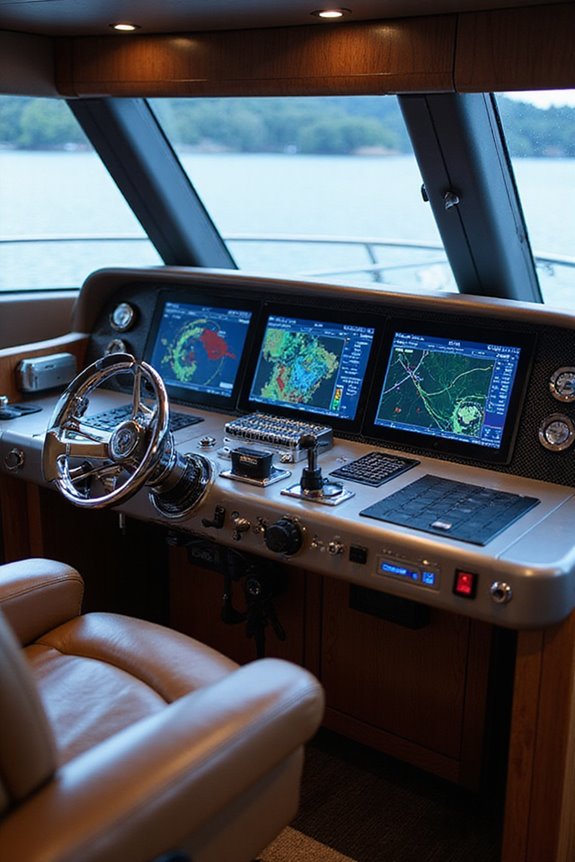
Autonomous docking tech has us all enjoying smoother arrivals, but once we’re on board, managing everything from navigation to monitoring calls for a setup that’s just as smart and streamlined. That’s where centralized bridge control consoles shine. By integrating radar, charts, steering, and even propulsion into one intuitive touchscreen interface, these systems boost operational efficiency like never before. Think of it as your yacht’s command center—everything you need at your fingertips, with alerts and controls unified for quick response. Plus, with full redundancy and class-approved design, you get reliability that reassures everyone on deck. Who wouldn’t want a bridge that’s not just functional but sleek, flexible, and easy to adapt as tech advances? Centralized control consoles make running your yacht simpler and safer—what’s not to like?
Dynamic Positioning and Assisted Maneuvering Systems
While sailing might seem like an art mastered by experience alone, today’s Dynamic Positioning (DP) and assisted maneuvering systems prove that a bit of high-tech muscle can make all the difference. With dynamic positioning benefits like holding your yacht’s spot without dropping anchor, we protect delicate seabeds and skip the hassle of weighing anchor in tricky spots. Assisted maneuvering techniques, including joystick controls and real-time adjustments, take the stress out of docking or cruising tight harbors. Imagine precise thruster output reacting instantly to wind and current—that’s DP at work, making close-quarter handling feel almost effortless. Whether protecting the environment or avoiding hull scrapes, these systems boost safety and ease for everyone on board. So, why not sail smarter, not harder?
Integration of AIS for Advanced Collision Avoidance
Since staying safe on the water is everyone’s top priority, integrating AIS—Automatic Identification System—into our yachts’ navigation setups can feel like having a sharp-eyed co-pilot who never sleeps. AIS continuously shares essential vessel data, helping us spot potential collisions early by calculating Closest Point of Approach and warning us before things get risky. But we’re not blind to AIS integration challenges—like ensuring AIS data reliability amid signal blind spots or dealing with VHF range limits. Still, combining AIS info with radar and charts boosts situational awareness, reducing those “did I really just see that?” moments. While AIS doesn’t replace our eyes and instincts—especially with smaller boats lacking transmitters—it’s a powerful tool we can’t overlook when aiming for smarter, safer navigation. Effective reception of AIS signals requires strategic antenna placement to maximize performance. Ready to add this co-pilot to your bridge?
Real-Time Weather and Sea Condition Updates
Maneuvering with AIS awareness gives us a great edge on the water, but keeping an eye on the sky and sea around us is just as important. That’s where real-time alerts come in—delivered through advanced systems gathering weather data from on-board instruments like the Airmar WX-220 and satellites. These sensors feed into smart dashboards, often built with tools like Grafana, letting us track wind, waves, and tides instantly. Ever wonder how we predict sudden storms? Weather data analysis using both historical and live info helps us anticipate shifts, keeping our voyages safer and smoother. So, embracing real-time weather and sea condition updates isn’t just smart—it’s like having a sixth sense out there, making belonging to this sailing community even more rewarding.
Safety Enhancements Through Smart Monitoring Systems
Even the best sailors can benefit from a little extra help, especially when it comes to safety. That’s where smart sensor integration really shines, blending seamlessly into our yacht’s systems to keep us informed and secure. Imagine proactive safety measures that don’t just react but anticipate—like the WATCHIT Smart Prevention System, which uses nautical charts and sensors to warn us before trouble hits. We also have options like the Siren 3’s intrusion alerts and YachtPilot’s anchor and wind monitoring, giving us peace of mind whether on board or miles away. These advanced setups offer real-time data, remote control, and customizable sensors, turning our vessels into nearly foolproof havens. So, isn’t it great to know our yachts are as smart about safety as we are about sailing?
Frequently Asked Questions
How Do These Navigation Systems Integrate With Existing Yacht Electronics?
We guarantee system compatibility by using standardized protocols like NMEA 2000, enabling seamless electronics integration. This way, we all connect legacy and new devices into one cohesive network, enhancing our shared navigation experience and safety onboard.
What Maintenance Is Required to Keep Advanced Navigation Systems Operational?
Did you know 75% of navigation mishaps stem from poor maintenance? We prioritize system calibration and regular software updates to keep everything smooth, ensuring our fleet stays connected and confident on every voyage we share together.
Are There Training Programs for Crew to Operate These Advanced Technologies?
Yes, we’re proud to offer crew certifications and technology workshops that bring us together as a skilled team. These programs guarantee everyone’s confident operating advanced systems, fostering safety, efficiency, and a shared sense of belonging on board.
How Do These Systems Perform in Remote Areas With Limited Connectivity?
Imagine we’re explorers crossing a vast, silent desert: satellite reliability guides us like stars, and terrain mapping sketches safe paths ahead. Together, these tools keep us connected and secure, no matter how remote the journey feels.
What Cybersecurity Measures Protect Navigation Data From Hacking?
We protect your navigation data with strong data encryption and advanced threat detection systems, creating a secure environment where we all can trust our shared voyage. Together, we keep hackers at bay and guarantee safe passages.

